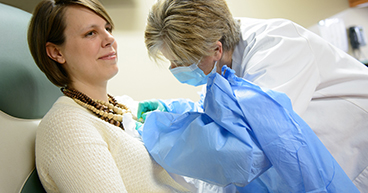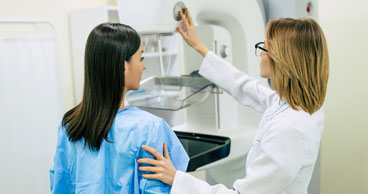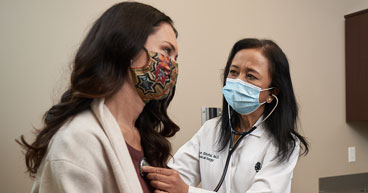
America received both good news and bad news on its 2025 annual cancer report card from the American Cancer Society (ACS).
First, the good: Fewer people are dying from cancer. The overall rate has dropped 34 percent from 1991 to 2022, thanks to improvements in detection, treatment and smoking cessation efforts.
Now for the bad: Cancer rates in young and middle-aged women are rising—past those of men in the same age group, but especially among women under age 50. Their cancer incidence rates are now an alarming 82 percent higher than their male counterparts.
The main takeaways? Cancer diagnoses are shifting from older adults to younger adults—and from men to women.
Rebecca Siegel, lead author of the report, said in a news release: “Progress is tempered by rising incidence in young and middle-aged women, who are often the family caregivers, and a shifting cancer burden from men to women, harkening back to the early 1900s when cancer was more common in women.”
In this article, we’ll explore:
- Cancer’s shift toward women
- Cancer’s shift toward younger adults
- Cancer survival rates improving
- Lasting racial disparities
- Other noteworthy findings
If you’ve been diagnosed with cancer and are interested in a second opinion on your diagnosis and treatment plan, call us or chat online with a member of our team.
Cancer’s shift toward women
Since the later 1900s, more men than women were diagnosed with cancer. But authors of the ACS report found that incidence rates in women between ages 50 and 64 have now surpassed men’s rates. They also found that women younger than 50 have an 82 percent higher cancer incidence rate than men younger than 50. That’s up from 51 percent in 2002.
Breast cancer rates, in particular, have been rising quickly among women under 50—up by 1.4 percent a year over the past decade. According to the ACS report, rising incidence is largely attributed to a decreasing fertility rate, increasing obesity among women and alcohol consumption.
“The increase in cancers observed in younger women is concerning,” says Maurie Markman, MD, President of Medicine & Science at City of Hope® Cancer Centers in Atlanta, Chicago and Phoenix. “Several hypotheses can be advanced to partially explain the data, including later childbearing, changes in tobacco and alcohol consumption among women, and the staggering increase in obesity within the population.”
Research shows that alcohol use —and misuse—among women is on the rise. With alcohol’s link to a higher risk for developing many cancers, including liver, head and neck, esophageal and, especially, breast, it’s a significant factor behind the shift.
So, of course, is obesity, which is tied to an increased risk for developing 13 types of cancer, which make up 40 percent of all cancers diagnosed in the United States each year and include:
- Brain cancer
- Breast cancer
- Colorectal cancer
- Esophageal cancer
- Gallbladder cancer
- Kidney cancer
- Liver cancer
- Multiple myeloma
- Ovarian cancer
- Pancreatic cancer
- Stomach cancer
- Thyroid cancer
- Uterine cancer
The ACS report also found that lung cancer rates in women younger than 65 surpassed men in the same age group.
Cancer’s shift toward younger adults
Another critical finding from the ACS report: The cancer burden is also shifting by age.
Although cancer still predominantly affects people 65 and older, new cancer diagnoses among adults in that age range dropped from 61 percent in 1995 to 59 percent in 2021, while people between the ages of 50 to 64—and people younger than 50—saw increases in cancer.
Over the past decade, researchers have been raising red flags about the growing incidence of the disease in people younger than 50.
For example, a recent study examined cancer trends in adults between the ages of 18 and 48 from 2016 to 2023. One of the major findings was that the rate of cancer treatments in patients between the ages of 18 and 49 increased from 2020 to 2023. The greatest increase, at 11.7 percent, was in patients between 18 and 29 years old.
Also, since the early 1990s, the incidence of colorectal cancer cases in younger adults has nearly doubled, with roughly 1 in 10 new diagnoses made in people 50 or younger.
Cancer survival rates improving
While the demographics of who bears the cancer burden appear to be in transition, one positive development from the report is that more people are surviving the disease.
The cancer mortality rate in the United States has dropped by 34 percent over the past 30 years, due to major gains in smoking cessation, early cancer detection and treatment advancements.
According to the ACS, that reduction has saved the lives of around 4.5 million people.
The five-year relative survival rates for most cancers have also improved over the past 40 years, with the highest for cancer of the thyroid (98 percent), prostate (97 percent), testis (95 percent) and melanoma (94 percent).
Lasting racial disparities
Still, despite the overall gains in cancer deaths, racial disparities persist. Black and Native American people, for example, are two to three times more likely to die from certain types of cancers. Black women are also 50 percent more likely to die from cervical cancer.
“Progress against cancer continues to be hampered by striking, wide static disparities for many racial and ethnic groups,” said Ahmedin Jemal, senior author of the study, in a news release. “It’s essential to help end discrimination and inequality in cancer care for all populations. Taking this step is vital to closing this persistent gap and moving us closer to ending cancer as we know it, for everyone.”
According to Wayne Frederick, MD, interim CEO of the ACS and the American Cancer Society Cancer Action Network (ACS CAN), “This report underscores the need to increase investment in both cancer treatment and care, including equitable screening programs, especially for underserved groups of patients and survivors. Screening programs are a critical component of early detection, and expanding access to these services will save countless lives.”
Other noteworthy findings
The ACS report also shared several additional findings about cancers that are being diagnosed more, as well as screenings.
Cervical cancer screening lags
Although the overall incidence of cervical cancer has stabilized over the past decade, rates in women between the ages of 30 and 44 have increased from 12.7 percent in 2013 to 14.1 percent in 2021 after decades of decline, according to the report’s authors, “with persistent reports of under-screening among young women in recent studies.”
Some cancer rates increasing
Incidence rates continue to increase among common cancers, including:
- Breast cancer in women
- Prostate cancer
- Pancreatic cancer
- Endometrial cancer
- Melanoma in women
- Liver cancer in women
- Oral cancers associated with the human papillomavirus (HPV)
Death rates are increasing for cancers of the oral cavity, pancreas, uterine corpus and liver (in women).
“While these cancers have multiple and differing risk factors, of concern are the varying influences of tobacco and alcohol consumption, as well as the impact of the epidemic of obesity on their development,” Dr. Markman says.
If you’ve been diagnosed with cancer and are interested in a second opinion on your diagnosis and treatment plan, call us or chat online with a member of our team.



